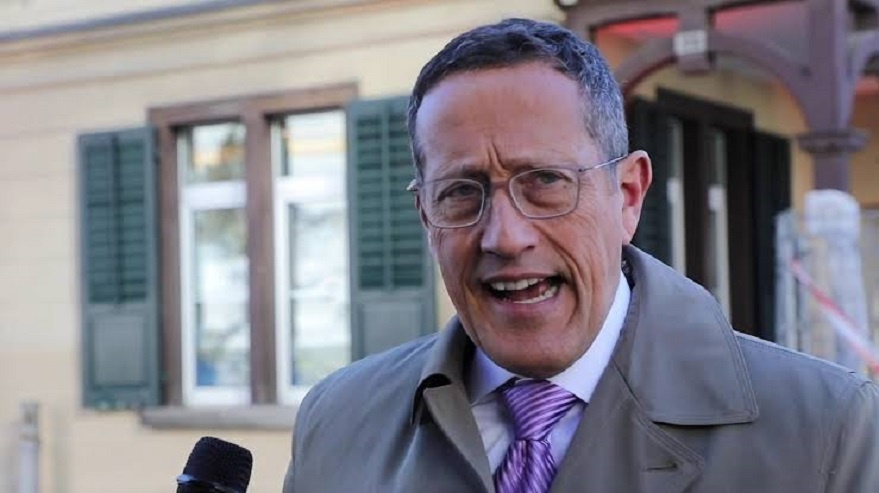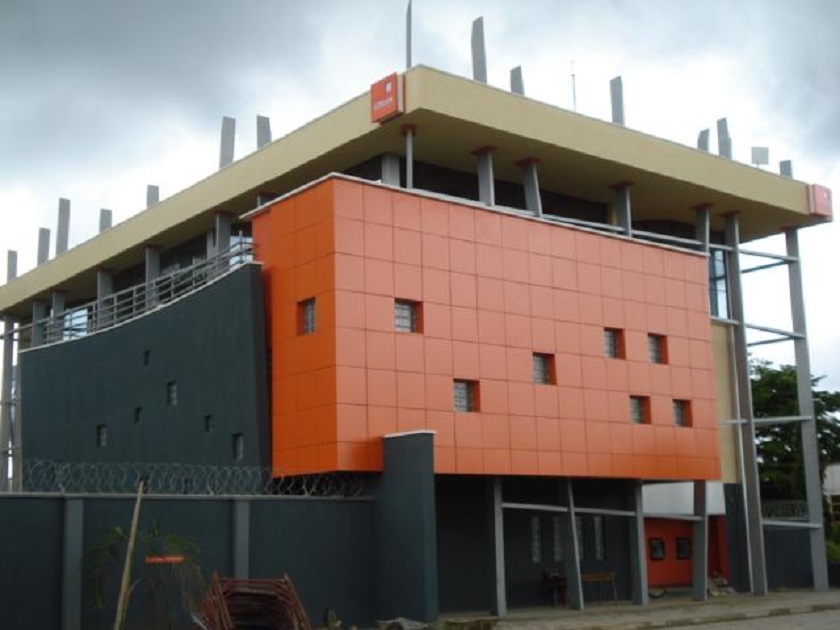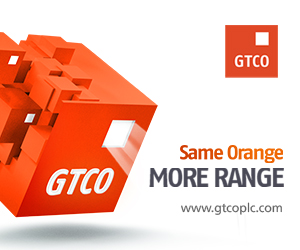Media OutReach
Hong Kong Ups Game with Exciting New Multi-purpose Sports Park

Speaking at the launch event, John Lee, Chief Executive of the Hong Kong Special Administrative Region hailed the venue as the largest sports, entertainment and mega event complex in Hong Kong’s history.
“The magnificent, multi-purpose Kai Tak Sports Park is a grand stage offering the most enjoyable experience for sports and recreation, entertainment and a whole lot more. Our new home ground will raise every game, on every match!” Mr Lee said. “And you can count on scores of concerts by top singers and bands from home and abroad, here to raise the roof of Kai Tak Stadium.”
Starting with a thunderous drum roll and traditional lion dance, the two-hour show featured performances by top local singers spanning different genres and generations as well as appearances by renowned celebrities and sports stars from Hong Kong and Mainland China.
It was a fitting opening of the 28-hectare KTSP, which will boost sports development and inject impetus into related industries such as recreation, entertainment and tourism, and also the mega-event economy, thereby consolidating Hong Kong’s reputation as an events capital in Asia.
The centrepiece Kai Tak Stadium boasts an eye-catching “Pearl of the Orient” design theme and a seating capacity of 50,000, making it the largest in Hong Kong. It features a customisable pitch system and retractable roof. This makes it an ideal venue for elite sports competitions as well as grand-scale concerts, vibrant music festivals and exciting cultural programmes.
Kai Tak Arena, with a capacity of 10,000 seats, is another versatile state-of-the-art facility designed to host various international tournaments. It is also convertible to accommodate other events such as fencing or snooker. With an adaptable configuration and interchangeable flooring surfaces, the arena can provide seamless transition between top-level sports events and community activities.
The outdoor Kai Tak Youth Sports Ground with 5,000 seats is an excellent venue for football and rugby matches, team and athlete training sessions, and school sports days.

A series of blockbuster events has already been lined up for KTSP. Among them are the World Grand Prix (snooker) and Hong Kong Sevens (rugby) in March and British rock band Coldplay’s world tour in April. KTSP will also be an iconic new destination for Hong Kong’s exciting co-hosting of the 15th National Games with Guangdong and Macao in November. Hong Kong will host a total of eight competition events and one mass participation event of the National Games, with Fencing, Handball (men), Rugby Sevens and the Mass Participation Event of Bowling set to take place at KTSP.
Beyond sports and entertainment, Kai Tak Mall is a retail paradise spanning nearly 700,000 square feet. It entices customers with a unique “sportainment” shopping and leisure experience, offering the most comprehensive collection of professional sports brands and lifestyle products in the city. The Mall also includes a Food Gala with popular eateries and the Dining Cove, a gourmet haven showcasing diverse culinary options from local favourites to international bites, all with stunning views of Victoria Harbour.
“Kai Tak Sports Park is made for you – Hong Kong and the world. Enjoy it all!” said Mr Lee.Hashtag: #hongkong #brandhongkong #asiasworldcity #kaitaksportspark #ktsp
![]() https://www.brandhk.gov.hk/
https://www.brandhk.gov.hk/![]() https://www.linkedin.com/company/brand-hong-kong/
https://www.linkedin.com/company/brand-hong-kong/![]() https://x.com/Brand_HK/
https://x.com/Brand_HK/![]() https://www.facebook.com/brandhk.isd
https://www.facebook.com/brandhk.isd![]() https://www.instagram.com/brandhongkong
https://www.instagram.com/brandhongkong
The issuer is solely responsible for the content of this announcement.
Media OutReach
XIXILI Reimagines Plus-Size Lingerie in Malaysia
When One Size Definitely Doesn’t Fit All
XIXILI’s Plus Size Collection flips the narrative that women need to settle for less-than-ideal sizes.
“For too many women, bra shopping has meant settling for sizes that almost fit or styles that prioritise function over fashion,” says XIXILI spokesperson Grace Tan. “Inclusivity is about recognising that every woman deserves access to beautiful, sexy, well-fitted lingerie. That shouldn’t be a problem they have to solve alone.”
To address the challenges of online fitting, XIXILI combines a detailed bra size chart with its pioneering ‘Try-On in 3D’ avatar tool. The feature allows women to generate a personalised digital twin based on specific measurements, enabling them to visualise the fit before purchasing.
Support Without Sacrifice: Plus Size Done Right
The Rufina Full Coverage Full Cup Bra sits at the heart of XIXILI’s Plus Size collection, designed for women who have been told they have to choose between support and style. The Rufina bra offers full coverage support with a contemporary silhouette that works under everything from work blouses to festive party dresses. Engineered specifically for fuller figures, it celebrates natural curves instead of trying to hide or minimise them. It’s the kind of foundation piece that lets you focus on your day, not your discomfort.
“We want every woman to feel supported, comfortable, and beautiful in whatever she’s wearing,” says Grace Tan. “Whether it’s for work, family gatherings, or special occasions, the right fit makes all the difference to daily comfort and confidence.”
Empowering Women With Knowledge, Not Just Options
XIXILI recognises that offering more sizes is only half the equation. Many women have spent years navigating limited options without proper guidance on finding their actual measurements.
The brand addresses this through interactive bra size charts, how-to-measure videos, and one-on-one personalised fittings at boutiques nationwide. By equipping women with the tools and knowledge to identify their true size, XIXILI transforms what can be a frustrating shopping experience into a more confident and informed process.
As Christmas shopping gets underway, the Plus Size Collection offers both a thoughtful gift for loved ones and an opportunity for self-care during the busy holiday season.
For more information and to discover the full range, visit XIXILI’s website.
Hashtag: #XIXILI
https://www.xixili-intimates.com/my/![]() https://www.facebook.com/XIXILI.OfficialFanPage/
https://www.facebook.com/XIXILI.OfficialFanPage/![]() https://www.instagram.com/xixili_intima/
https://www.instagram.com/xixili_intima/![]() https://www.tiktok.com/@xixili_intima?lang=en
https://www.tiktok.com/@xixili_intima?lang=en![]() https://www.youtube.com/user/xixilipage
https://www.youtube.com/user/xixilipage
The issuer is solely responsible for the content of this announcement.
XIXILI
A homegrown Malaysian brand, XIXILI offers beautiful fashion lingerie and shapewear in Malaysia that prioritises fit and comfort. With an extensive range of bra sizes from A to I and bands 65 to 110cm, XIXILI caters to women of all shapes and sizes. Expert fitters are dedicated to helping each customer find the perfect bra, boosting confidence and enhancing silhouettes.
XIXILI became the first Malaysian lingerie brand to introduce a Try-On in 3D avatar tool, allowing customers to virtually try on XIXILI lingerie using a 3D avatar tailored to their specific body type and measurements. Whether for everyday wear or something special, XIXILI ensures women always look and feel amazing.
Media OutReach
Essential Document Checklist for SIM Applications
Preparation Is Key
SIM reviews thousands of applications each year, and incomplete submissions remain one of the primary causes of processing delays. Early preparation of all required documents is essential to ensure a seamless application experience and allow applicants to remain focused on their academic objectives. As stipulated in SIM’s Application Process Guide, all supporting documents must be uploaded at the point of application and submissions lacking these documents will not be processed.
The Core Documents Every Applicant Needs
Prior to applying to the Singapore Institute of Management (SIM), applicants should ensure that all required documents are prepared to prevent processing delays. Scanned copies of academic certificates and transcripts, such as GCE ‘O’ and ‘A’ Levels, diplomas or degrees must be provided, along with certified translations and notarisation for documents not in English.
Proof of English language proficiency, such as IELTS or TOEFL results, is mandatory for applicants whose previous education was not conducted in English. Identification documents are also required, including the NRIC for local applicants and a valid passport for international applicants, accompanied by a recent passport-sized photograph that complies with SIM’s specifications.
International applicants must additionally prepare documentation for the Student’s Pass application, which includes the passport bio-data page, birth certificate, evidence of financial capability, and, where applicable, parent or guardian identification documents.
Quick Tips to Avoid Delays
Submitting an application to the SIM can be a straightforward process with proper preparation. Ensure that all documents are uploaded in the correct format, with PDF being the standard for certificates and transcripts. For documents not in English, certified translations must be provided to prevent rejection or requests for re-submission.
Applicants should also adhere to SIM’s photo specifications by submitting a recent passport-sized photograph that meets official guidelines. International students must pay particular attention to financial documentation, as proof of financial capability is a key requirement for the Student’s Pass application. Bank statements and supporting documents should be prepared in advance to comply with Immigration & Checkpoints Authority (ICA) requirements. Following these steps will help avoid unnecessary delays and ensure a smooth application process.
Application Essentials
Prospective students are advised to submit a complete and accurate application to ensure smooth processing. Detailed instructions and programme-specific requirements can be found on SIM’s official application portal. Applications that are incomplete or contain inaccuracies will not be considered. To avoid delays, applicants should make use of the provided checklist and guidelines to confirm compliance before submission.
References:
- SIM Application Process – https://www.sim.edu.sg/degrees-diplomas/admissions/application-process
Hashtag: #SIMGlobalEducation #SIMGE
The issuer is solely responsible for the content of this announcement.
About SIM Global Education
SIM Global Education (SIM GE) is a leading private education institution in Singapore and the region. We offer more than 140 academic programmes ranging from diplomas and graduate diploma programmes to bachelor’s and master’s degree programmes with some of the world’s most reputable universities from Australia, Canada, Europe, United Kingdom, and the United States. SIM GE’s cohort is made up of 16,000 full- and part-time students and adult learners, of which approximately 36% are international students hailing from over 50 countries.
SIM GE’s holistic learning approach and culturally diverse learning environment aim to equip students with knowledge, industry skills and employability competencies, as well as a global perspective to succeed as future leaders in a fast-changing, technologically driven world.
For more information on SIM Global Education, visit sim.edu.sg
Media OutReach
Vinfuture 2025 Honors Four Groundbreaking Scientific Achievements Under The Theme “Rising And Thriving”
The 2025 VinFuture Prize Award Ceremony was broadcast live on VTV1, the national television channel of Vietnam. The event was attended by Mr. Tran Thanh Man, Politburo member and Chairman of the National Assembly, along with leaders of central ministries and agencies, representatives of embassies and international organisations, and distinguished scientists from around the world.
The VinFuture Prize 2025 received 1,705 nominations from scientists, research institutions, and technology enterprises worldwide, representing an almost threefold increase relative to the inaugural year. These submissions highlight impactful cross-border research efforts focused on protecting public health, advancing next-generation intelligent materials, addressing climate change, accelerating novel energy solutions, and strengthening global food security frameworks.
The 2025 VinFuture Grand Prize valued at US$3 million is awarded to Dr. Douglas R. Lowy, Dr. John T. Schiller, Dr. Aimée R. Kreimer and Prof. Maura L. Gillison (USA) for discoveries and development of HPV vaccines for prevention of tumors caused by human papillomaviruses.
Foundational studies on HPV capsid proteins by Drs. Douglas Lowy and John Schiller led to the development of highly effective HPV vaccines, preventing millions of cervical cancer cases, especially in developing countries. Furthermore, the single-dose vaccination regimen developed by Dr. Aimée Kreimer – now recommended by the World Health Organization (WHO) – has significantly expanded vaccine access for populations worldwide.
In parallel, laboratory and epidemiological studies by Prof. Maura Gillison and Dr. Aimée Kreimer established the link between HPV and head-and-neck cancers, which represent an emerging cancer threat expected to be mitigated by HPV vaccination efforts. The achievements of Dr. Douglas Lowy, Dr. John Schiller, Dr. Aimée Kreimer, and Prof. Maura Gillison have already saved millions of lives and will keep lowering the global cancer burden for decades to come.
In addition to the Grand Prize, the 2025 VinFuture Prizes will also present three Special Prizes, each valued at US$500,000, recognizing Innovators from Developing Countries, Women Innovators, and Innovators with Outstanding Achievements in Emerging Fields.
The 2025 VinFuture Special Prize for Innovators from Developing Countries is awarded to Prof. María Esperanza Martínez-Romero (Mexico) for advances in microbial ecology and symbiotic nitrogen fixation in the tropics. Prof. Martínez-Romero has discovered and described numerous new Rhizobium species, significantly expanding scientific understanding of microbial taxonomy and plant-microbe interactions in agriculture. Her work has opened new directions in the study of bacterial-plant symbiosis, with profound implications for sustainable agriculture in resource-limited settings.
The 2025 VinFuture Special Prize for Women Innovators is awarded to Prof. Mary-Claire King (USA) for identification of the breast and ovarian cancer susceptibility gene BRCA1, laying the foundation for genetic testing, screening programs, and personalized treatment. Her landmark identification of the BRCA1 locus on chromosome 17q21 in 1990, before the human genome was sequenced, is considered a historic milestone, demonstrating the genetic basis of cancer risk and transforming prevention and treatment strategies worldwide.
The 2025 VinFuture Special Prize for Innovators with Outstanding Achievements in Emerging Fields has honored Prof. Venkatesan Sundaresan (USA), Prof. Raphaël Mercier (Germany), Dr. Emmanuel Guiderdoni (France), Dr. Imtiyaz Khanday (USA) and Dr. Delphine Mieulet (France) for innovations in the development of clonal hybrid crops. Hybrid seed production for rice, the staple food for more than half of humankind, is a laborious and costly procedure resulting in a high seed cost. The team’s work has enabled rice plants to produce seeds that retain all the superior traits of the parent plant through self-pollination, grounded in new insights into developmental biology and genetics. This groundbreaking research improves yields, reduces seed production costs, and advances sustainable global food security.
Sharing his reflections on this year’s honored works, Prof. Sir. Richard Friend, Chair of the VinFuture Prize Council, stated: “The 2025 VinFuture Prize Laureates have made big advances in science that have brought direct benefits to human health and to global sustainable food crop production. From new vaccines and new understanding of genetic susceptibility to disease to new approaches for plant breeding and new protocols for healthy crop growth, these achievements exemplify the power of science driven by compassion and cross-border collaboration – showing that when knowledge serves humanity, it not only deepens our understanding of the world but also strengthens and sustains the very foundations of life itself.”
After five consecutive and widely acclaimed award cycles, the VinFuture Prize has been securing recognition among the world’s most prestigious science and technology awards, receiving 6,132 nominations from nearly 110 countries and territories across five continents, and honoring 48 outstanding laureates. The awarded innovations—spanning clean energy, artificial intelligence, biomedical technologies, and transformative advances in agriculture—are elevating quality of life, strengthening human well-being, and shaping strategic pathways for the future of humanity.
The VinFuture Prize Ceremony and VinFuture Sci-Tech Week have evolved into an established global platform for scientific exchange, bringing together scientists, policymakers, and business leaders to advance collaborations toward a sustainable, humane, and prosperous future.
Notably, after five award seasons driven by persistent efforts to connect global scientific excellence with the Vietnamese research community, the VinFuture Foundation and the VinFuture Prize have not only fostered new opportunities and momentum for national science, but have also strengthened Vietnam’s standing as a trusted destination for the world’s scientific community—where innovation is widely shared and amplified for the collective prosperity of humankind.
Hashtag: #Vinfuture
The issuer is solely responsible for the content of this announcement.
-

 Feature/OPED6 years ago
Feature/OPED6 years agoDavos was Different this year
-
Travel/Tourism9 years ago
Lagos Seals Western Lodge Hotel In Ikorodu
-

 Showbiz3 years ago
Showbiz3 years agoEstranged Lover Releases Videos of Empress Njamah Bathing
-

 Banking7 years ago
Banking7 years agoSort Codes of GTBank Branches in Nigeria
-

 Economy3 years ago
Economy3 years agoSubsidy Removal: CNG at N130 Per Litre Cheaper Than Petrol—IPMAN
-

 Banking3 years ago
Banking3 years agoFirst Bank Announces Planned Downtime
-

 Banking3 years ago
Banking3 years agoSort Codes of UBA Branches in Nigeria
-

 Sports3 years ago
Sports3 years agoHighest Paid Nigerian Footballer – How Much Do Nigerian Footballers Earn











